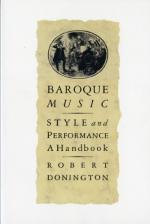|
This section contains 1,685 words (approx. 6 pages at 300 words per page) |

|
French Dominance.
At the beginning of the eighteenth century French patterns of social dances remained common in the courts and elite societies of continental Europe. The stately minuet was the dominant couple's dance practiced at this time; its measured and careful use of the body was believed to reflect one's grace and deportment. At the same time, the straightforward patterns of French contredanses or "country dances" also had a general appeal throughout cultivated circles. Knowledge of these dances had spread quickly throughout Europe in the later seventeenth century through the publication of dance manuals, as well as the adoption of Feuillet's system of notation for dances. Dance also remained a vital social skill, practiced by nobles and the wealthy throughout the continent. As the eighteenth century progressed, though, a rising standard of living and increased numbers of leisure...
|
This section contains 1,685 words (approx. 6 pages at 300 words per page) |

|




